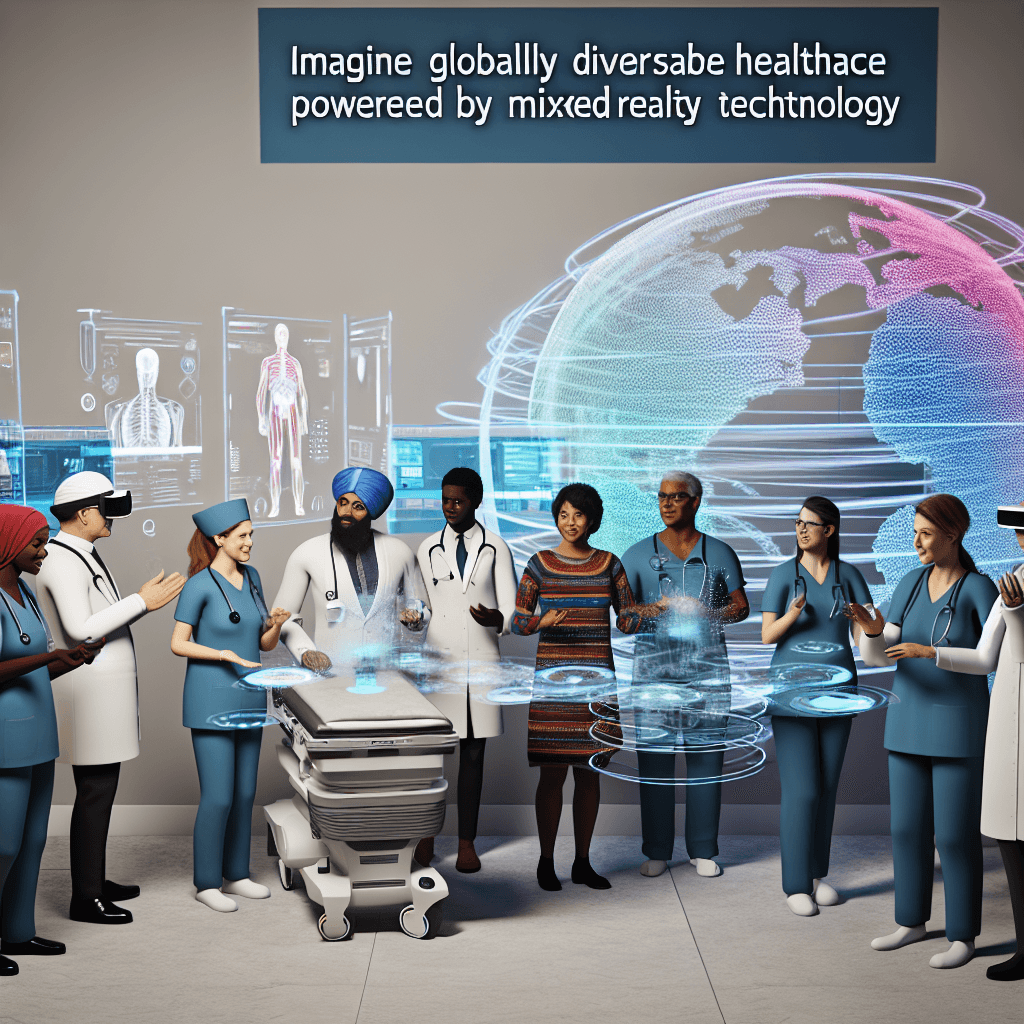Explore the expanding global mixed reality in healthcare market, its innovations, growth trends, and impact on medical training and treatment.
Global Mixed Reality In Healthcare Market

Table of Contents
Exploring the Global Mixed Reality in Healthcare Market

The integration of mixed reality (MR) in healthcare is revolutionizing the medical field, offering innovative solutions for training, surgery, patient care, and therapy. This article delves into the current landscape, key drivers, challenges, and future prospects of the global mixed reality in healthcare market.
Understanding Mixed Reality in Healthcare
Mixed reality blends real-world and digital elements to create a new environment where physical and digital objects co-exist and interact in real time. In healthcare, this technology is being harnessed to enhance the accuracy and efficiency of medical procedures, improve training, and deliver innovative treatment solutions.
Current Market Overview
The global mixed reality in healthcare market has witnessed significant growth in recent years. According to a report by Grand View Research, the market size was valued at USD 60.35 million in 2019 and is expected to grow at a compound annual growth rate (CAGR) of 27.2% from 2020 to 2027. This growth is driven by the increasing demand for innovative and effective healthcare solutions amidst the growing global health challenges.
Key Drivers of Growth
- Technological Advancements: Continuous improvements in MR technology, including better sensors, more immersive hardware, and advanced software, are making it more accessible and effective for healthcare applications.
- Increased Healthcare Expenditure: As global healthcare spending increases, there is more investment in technologies that can improve treatment outcomes and operational efficiencies.
- Focus on Medical Training and Education: MR provides an immersive learning environment for medical students and professionals, enhancing their understanding and skills through realistic simulations.
Applications of Mixed Reality in Healthcare
Mixed reality is being applied in various areas of healthcare, each demonstrating significant benefits in terms of outcomes and patient care. Here are some key applications:
- Surgical Planning and Assistance: MR allows surgeons to visualize and interact with accurate 3D representations of a patient’s anatomy during planning and actual surgery, leading to increased precision and reduced risk of errors.
- Medical Training: Through MR, medical students and professionals can practice procedures in a controlled, virtual environment, which can be repeated as often as needed to enhance learning and retention.
- Physical Therapy and Rehabilitation: MR applications in rehabilitation can track patients’ movements, provide real-time feedback, and adjust therapy programs to better suit individual recovery needs.
- Patient Care and Management: MR tools can help in explaining medical conditions and treatments to patients, improving their understanding and engagement in their own care processes.
Challenges and Barriers
Despite its potential, the adoption of mixed reality in healthcare faces several challenges:
- High Costs: The initial cost of MR technology, including hardware and software development, can be prohibitive for many healthcare providers.
- Technical Complexity: Integrating MR into existing healthcare systems requires significant technical expertise and can involve complex system overhauls.
- Regulatory and Privacy Issues: The use of MR involves handling sensitive patient data, which must be managed in compliance with strict privacy regulations and standards.
Case Studies
Several healthcare institutions and companies have successfully integrated mixed reality into their operations. Here are a few examples:
- Case Western Reserve University: They have partnered with Microsoft to use HoloLens for teaching anatomy. This has allowed students to visualize and interact with 3D models of the human body, enhancing their learning experience.
- Imperial College London and St Mary’s Hospital: Surgeons use Microsoft HoloLens during reconstructive surgery on patients who have suffered severe injuries. This technology allows surgeons to overlay CT scans onto patients’ limbs, improving accuracy and reducing surgery time.
Future Prospects
The future of mixed reality in healthcare looks promising with continuous technological advancements and increasing adoption. Innovations such as AI integration and cloud-based MR solutions are expected to further enhance the capabilities and accessibility of mixed reality in healthcare.
Conclusion
The global mixed reality in healthcare market is poised for significant growth, driven by technological advancements, increased healthcare spending, and the rising demand for innovative training and treatment methods. While challenges such as high costs and technical complexity exist, the potential benefits of improved surgical outcomes, enhanced medical training, and better patient care present compelling reasons for continued investment and development in this field. As the technology evolves, it will likely become a staple in medical institutions worldwide, fundamentally transforming the landscape of healthcare education and practice.








